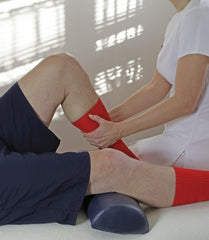Rugby Blog
Recovery From Rugby
by Leana Kell
It is crucial for athletes to learn how to recover properly following exercise. When rugby players are playing in a tournament they often have a grueling schedule of matches, which makes recovery time between games even more crucial.
At the time of the Rugby World Cup 2015, Japan's ability to beat South Africa but then lose to Scotland was cited as a prime example of players simply not having enough recovery time in between matches.
Every rugby team will have a team of medical staff who are employed to use the best methods to get their players back to top shape following a tough day on the pitch.
Below, Centurion explores the different methods of recovery recommended by medical experts.
Cryotherapy (WBC)
Massaging and stretching are a staple part of a rugby player's routine, but more surprisingly is a freezing treatment. The technique, known as Whole Body Cryotherapy (WBC) involves rugby players being exposed to cold dry air below -100 degrees in a specialised chamber or cabin for 2-4 minutes. Although this method has proved effective for many years, there are some medical experts who are now questioning its validity.
Ice baths
Several national Welsh and English rugby teams still adopt this age-old treatment, whilst Italy's World Cup squad were also photographed using it ahead of their match against France in Surrey. Ireland's Rugby Union praise the value of cold treatments on their website, and suggest cold showers are more effective than warm ones. It said; "Ideally, a cold plunge bath is excellent at cooling the body. This used to be a very effective practice in Eastern Bloc countries following training and competition."
The 'three R's'
This method has been advocated by Dr Costello, from Portsmouth University's sport and exercise science department. The three R's stand for Replenish, Restore and Rest. Players are advised to replenish fuel stores and deliver protein to assist with muscle repair and synthesis, restore fluid and electrolytes lost in sweat, and rest, to ensure they get plenty of quality sleep to maximise recovery.
Recovery training
The day after a game, rugby players should perform what is known as recovery training. Players are encouraged to complete a resetting exercise programme designed to restore the balance of tension and mobility into the exercised limbs. A 20 minute session will be enough to effectively reset an athlete.
Pool recovery
A hydro or pool recovery session is also ideal for restoring mobility to exercised limbs. Pool sessions should last no longer than 10-20 minutes and combine easy swimming with active stretching techniques. A typical pool recovery session will consist of a short swim of 2-5 lengths, followed by a 30 second stretch of the hamstrings. Then, a further swim of 1 length followed by a stretch of 30 seconds. Athletes should repeat the routine 1-3 times to stretch out all the important areas of the body, then complete the end of the session with a 2 minute cool shower.
Chronic fatigue
This can occur in some rugby players mid-season due to the intense demands of training and playing. To help to avoid this symptom, which can be caused by overtraining or training that lacks variety, it is important to build regular recovery periods into training programmes. For example, every 5 weeks of training, players should take a complete break from all the different methods of training and reduce their rugby practice time significantly. This doesn't mean stop rugby practice altogether, but a variation in the format of practice is essential in restoring a renewed energy to weary players.




